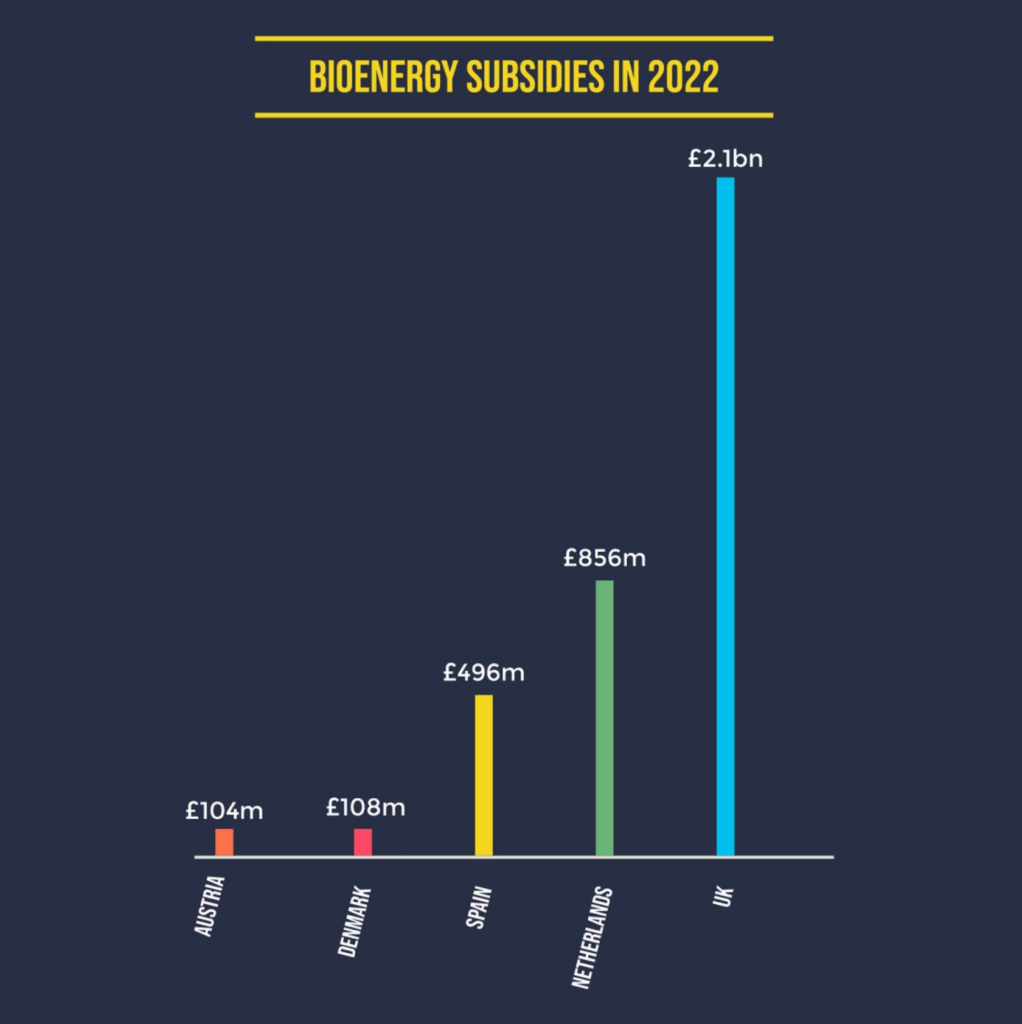The UK is the top subsidiser of bioenergy in Europe. In 2024, Drax power station received £869 million in biomass subsidies. In 2021, the UK spent more than £2.1 billion on bioenergy subsidies, primarily to burn wood imported from overseas forests at Drax Power Station. On average, every person in Britain paid £30 to support the UK bioenergy industry.
Biomass subsidies are paid from an extra charge on household electricity bills, increasing overall electricity costs for British families. This means the British public is effectively paying a “bioenergy tax”to burn other countries’ forests. Climate think tank Ember estimated that subsidies to large biomass power plants cost UK energy billpayers more than £1 billion in 2020 — or almost £3 million a day. Ember also found that energy billpayers will spend £13 billion in direct support to large biomass power plants by 2027 (including £10 billion at Drax alone). In addition to these direct subsidies, biomass generators are receiving carbon tax breaks of £333 million a year.
Subsidies to biomass electricity are all the more shocking considering wind and solar power guarantees real emissions reductions and is readily available at a fraction of the cost. This means that while wind and solar help bring down energy bills much of the time, biomass increases bills.
Combined with battery storage, wind and solar could provide more than enough electricity for the UK, according to the University of Oxford. Studies have shown for years that biomass plants are uneconomic compared to these true renewable alternatives and unnecessary for ensuring the reliability of the UK electricity supply.
Analysis shows that if biomass subsidies were spent differently they could insulate over 400,000 of the coldest and draughtiest homes in the UK, saving money on energy bills as well.








